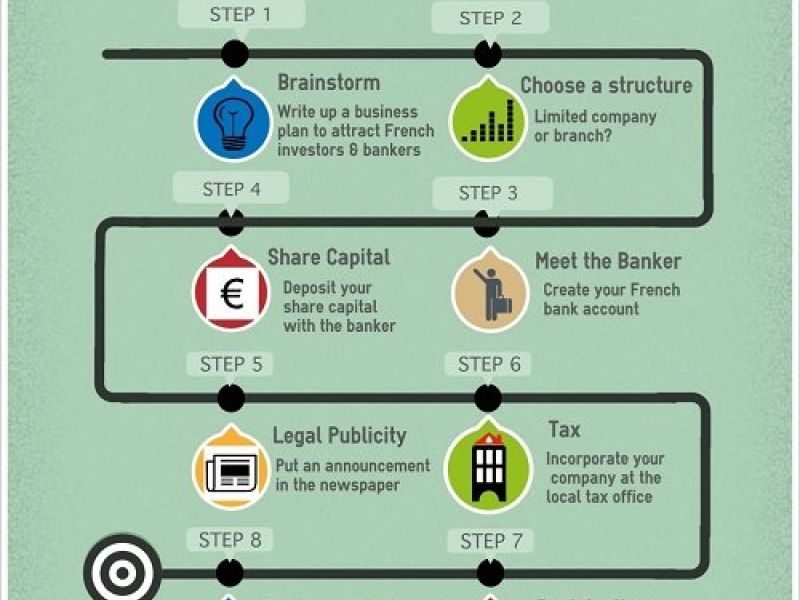While the effects of the pandemic and energy crisis continue to bite, European economies seem to be rousing from their slumber. New GDP figures for the Eurozone show sustained growth for many nations over the past 12 months, and improvements continuing into the new year. A modest average growth of 0.3% made for a yearly increase of 5.2%, despite countries such as Germany continuing to struggle.
With Europe’s traditional powerhouse reeling from another wave of the coronavirus, other nations are starting to reflect high consumer spending, and exhibiting strong recoveries from the pandemic. Here are the fastest growing countries in Europe in 2022 based on the latest data - and some fruitful opportunities for businesses looking to establish themselves on the European stage.
Spain
Spain is leading the way in the latest growth figures for Europe. Quarterly growth is the strongest of any Eurozone country at 2% for Q4 2021, while growth is up by 5.2% compared to the same period in 2020. The country has undoubtedly benefited from a successful vaccine rollout, and a series of measured lockdowns, which have balanced economic recovery with necessary measures to limit the impact of the coronavirus.
Related article: The best country to start a business in Europe
Driving this recovery is Spain’s impressive array of small businesses. While Germany’s ‘Mittelstand’ - the small, specialised businesses that often supply manufacturing giants - is arguably more famous, Spain is perhaps the most small business oriented country in Europe. 99.84% of all businesses in Spain employ fewer than 250 people, while less than 1% employ more than 50 people.
A plan for further post-pandemic recovery also strikes a positive note for 2022. Spain will benefit from €140 billion in EU pandemic recovery funding, including almost €70 million of direct funding and another €70 million or so in loans. As tourism rebounds with the end of prolonged lockdowns and restrictions, Spain is among the countries best positioned to take advantage, and accelerate growth in 2022.
Portugal
The other half of the Iberian peninsula is also faring extremely well at the start of 2022. The centre-left Socialists have just increased their majority in national elections following their successful handling of the pandemic, with extremely high vaccination rates and a reversal of previous austerity measures. All of this has led to quarterly growth figures of 1.6%, and an increase in GDP of 5.8% year-on-year.
€600 million a month was quickly made available for furloughed workers in 2020, while €13 billion in credit was made available to small and medium sized businesses. 2021 saw a further €750 billion made available in loans and subsidies, as well as rent subsidies of up to 50%. A moratorium on business loans was also announced, initially for six months and then extended until September 2021.
Related article: Starting a business in Portugal – Everything you Need to Know
All of this has meant that the economy has rebounded strongly, with further gains expected in 2021. Tourism is a huge part of the Portuguese economy, and to this end, the government has already announced a €6 billion ‘reactivation plan’ for the industry. The strengthening of the current government’s mandate should be good news for businesses, strengthening their mandate and ability to pass budgets.
France
At the height of the pandemic and with much of the country in lockdown, it was hard to imagine France rebounding as quickly as it has. Yet despite the continued impact of the pandemic on tourism - France being the most visited country in the world - the economy has defied expectations. Impressive quarterly growth of 0.7% adds to the yearly GDP growth of 5.4%, and makes good reading for businesses in the country.
Despite a series of extended lockdowns, an extremely high vaccination rate has allowed France to steadily decrease control measures over recent months, and ramp up growth during the Omicron wave. This stands in sharp contrast to Germany, which is suffering deeply from the continued impact on exports, and a devastating new wave of the virus.
Related article: How to start a business in France in 8 Steps
Government subsidies have helped to prop up production and encourage business investments, ensuring that domestic demand has been met, and companies have continued to innovate. The positive growth and optimistic business environment are both a big boost for President Emmanuel Macron - whose business-oriented policies have occasionally courted controversy - as he seeks re-election this year.
Sweden
While rarely thought of as one of Europe’s leading economies, Sweden has accelerated past many of its neighbours with 1.4% quarterly growth, and a rise of 6.1% in GDP since Q4 2020. Part of this can be put down to its extremely unusual coronavirus strategy, with no countrywide lockdowns imposed at any point. As a result, most businesses have remained open throughout the pandemic, albeit with more restrictions being imposed as time went on.
An initial impact on manufacturers such as Volvo and Scania has now eased, with manufacturers across the country now accelerating their efforts to meet pent-up demand. A €27 billion emergency package meanwhile helped small and medium sized businesses stay afloat by paying a proportion of employees’ wages, and covering business expenses derived from absences due to illness.
Sweden’s growth figures are actually higher than was predicted for 2021 before the pandemic happened - meaning that arguably, the pandemic has left the country in a stronger position economically. The Swedish krona has allowed the country to avoid the travails of the euro, and has been stable throughout the pandemic. The picture for businesses is good - and all of this without sacrificing staples such as a strong union culture.
Italy
Of all the European success stories in the past year, Italy’s is perhaps the most unexpected. Arguably the country in Europe worst hit by the coronavirus - if not the world - Italy is also highly dependent on tourism and exports, two areas where demand had fallen drastically. But the past year has seen a successful effort to end lockdowns and restrictions, and the signs of continuing improvement for businesses are positive.
Italy’s GDP grew by 0.6% in the last quarter, but was up an almighty 6.5% compared to the same period in 2020. The election of former European Central Bank chief Mario Draghi as Prime Minister has helped to guide Italy through the worst of the pandemic, where the economy contracted by 8.9% the previous year. His reforms have included tax cuts and changes to public administration that have helped to foster growth.
With exports and tourism still limited by the impact of the pandemic, the main areas of growth have been the resurgent industry and services sectors. With restrictions being lifted around the world, however, this summer will be a bellwether for how much the tourist economy has recovered. For savvy businesses looking to capitalise on this demand, Italy’s friendly approach to foreign investment and entrepreneurs may be an enticing combination.
While it would be foolish to think that we’re completely out of the woods, there is cause for positivity in 2022. The economic growth across the Eurozone has occurred not just in spite of the pandemic, but also a continued deficit in exports, limited tourism and a serious fuel crisis. All signs suggest that this growth should continue this year - and herald an upturn for business and entrepreneurs across the continent.
If you need more information on how to start a business in Europe you can download our free in-depth guides below this article. And for more details on registering a business address, opening a bank account, tax advice or help in finding a chartered accountant, please click on the links, and either call us directly on 0033 (0)1 53 57 49 10 or email us from our contact page.







